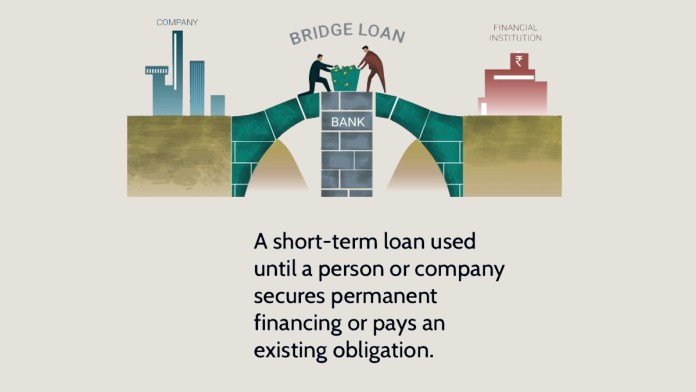A bridge loan is a short-term financing option that helps homeowners purchase a new home while in the process of selling their current one. Although it is quite expensive and requires a good amount of equity in your current home, this type of loan can solve potential problems. With the help of a bridge loan, you can smooth the process of home buying.

Also referred to as a hard money loan, this short-term loan is designed to offer easy financing during the transitionary period. Mostly, this loan is secured by your current home as collateral. It is similar to loans like home equity, HELOCs, and mortgages. However, sometimes you can put up other assets as collateral.
How Does a Bridge Loan Work?
Bridge loans are a very useful tool for sellers needing quick funds and can vary in structure, costs, and conditions. If you qualify for this loan, you could borrow a substantial amount, from several hundred thousand dollars to over $1 million.
For example, you might use this loan to cash out equity from your current home for a down payment on a new property or take out a larger mortgage for the new home.
Another type of bridge loan makes use of both homes as collateral. Some loans have monthly or interest-only payments, while others require a huge sum of interest either upfront or at the end of the term.
Most bridge loans share these common features:
- They typically last for six to twelve months and are secured by the borrower’s old home.
- Lenders usually require that you finance the new home’s mortgage with the same institution.
- Interest rates range from the prime rate to the prime rate plus 2 percentage points.
Example of Bridge loans
Let’s say you get approved for a bridge loan of $70,000, your current home is worth $100,000, and a balance of $50,000 is left on your mortgage. Out of the $70,000 loan, $50,000 will go to your mortgage, and another $2,000 will go to the closing costs. Fortunately, borrowers should have up to $18,000 for their next purchase if the sale of their current home is successful.
When Can I Consider a Bridge Loan?
Bridge financing is often used when homeowners plan to purchase a new home before selling their current one. This loan may be a good choice if: You found a new place, but the seller won’t accept the contingency offer to sell out your current place.
Or you are not able to come up with a down payment for a new purchase unless you sell the current home. Or if the closing date for your current home is after the new home settlement, or if you are in a market and you have seen a new home.
Pros and Cons of Bridge Loans
Now, let’s check out the advantages and disadvantages of this financing method.
Pros
- It is good for quick or time-sensitive transactions. Some lenders close in two weeks.
- Payments can be deferred until you sell your current home or make interest-only payments.
- There is no contingency needed. A bridge loan offers you funds to settle down in your new home if you have not sold out the old one yet.
Cons
- Most lenders require you to have at least 20% equity in your current home.
- The lender may extend the loan if you agree to go with the same lender for the new home mortgage.
- Bridge loans usually have very high APRs and interest rates compared to traditional mortgage.
- The loans rarely come with protection for you if your old home sale falls through. In this case, the lender can even foreclose the old home after the loan has expired or if you have issues selling the home.
Bridge Loan Requirements
To apply for the bridging loan, there are certain requirements the lenders will look at. They include;
- Credit score: Because lenders have more flexible underwriting, you may be able to get a bridge loan with a credit score of 500.
- Debt-to-income ratio: some lenders allow a debt-to-income ratio as high as 50%.
- Equity: If you are taking this loan, many lenders may require at least 15% equity in your current home. Some require 20%.
Keep in mind that the requirements of this financing method are not limited to the above.
How to Apply for a Bridge Loan
Applying for a bridge loan is almost the same as applying for a regular mortgage. Lenders will check your credit score, debt-to-income ratio, and other factors to determine your creditworthiness. Generally, you can borrow about 80% of your current home’s equity.
Keep in mind that bridge loans can be expensive. You’ll need to pay closing fees, which can be a few thousand dollars, plus up to 2% of the loan amount, along with an origination fee. And you will need to settle all these before you get a mortgage for your new home.
Once you decide to apply for a bridge loan, you should start by contacting your current mortgage lender to see the rate they offer. Then, shop around and check different companies for other, more affordable options. Compare the offers to find the best loan for your needs and budget.



